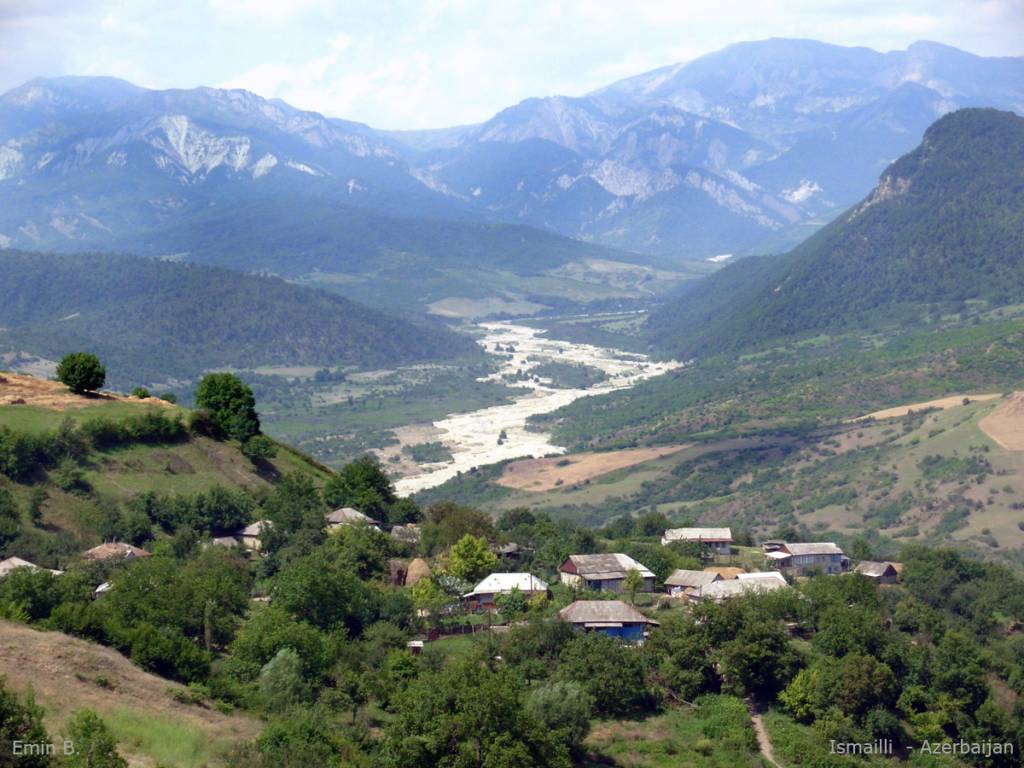The republic of Azerbaijan in Southern Caucasus, where Western Asia and Eastern Europe meet, boasts a rich cultural heritage, unique biodiversity as well as large oil and natural gas reserves. The country’s name itself translates into ‘The Land of the (Holy) Fire’, perhaps referring to flames of burning gas observed on its territory.
Azerbaijan is home to Ruhiyye Mahmudova, a Global Power Shift activist and an English teacher at a secondary school in Ismayilli, a small town in the mountains. In recent years, the area around Ismayilli has started to see landslides.
‘Landslides began in 2010 and became bigger and more widespread in 2011’, says Ruhiyye. ‘Big landslides happened in over 10 villages in our region, especially the village of Tirjan was hit hard in 2011. Many houses were damaged. Some became uninhabitable. People had to be evacuated.’
‘In a village called Vasha, in the region of Muganni, landslides even caused the formation of small lakes,’ she adds.
Ruhiyye became concerned about the landslides and learned about the causes behind this problem. She explains, ‘In Ismayilli, which is situated in a tectonically active area, the landslides were not primarily caused by groundwater or heavy rainfall, but mainly by woodcut in recent years.’
‘The tree roots firm and strengthen the soil. Massive deforestation made the ground erode.’
Ruhiyye started to organize lectures and action days in her school to educate children and teachers about the connections between deforestation, climate change and landslides.
According to WWF [1] current climate change impacts observable in the region include ‘increasing temperatures, shrinking glaciers, sea level rise, reduction and redistribution of river flows, decreasing snowfall and an upward shift of the snow-line.’
‘Global climatic change is very much observable in Azerbaijan and is directly affecting the livelihoods of communities,’ says Gulshen Huseynova, environmental and cultural heritage expert at the Azerbaijani NGO ‘Miras’ (‘Heritage’). ‘The main problem in our country is glaciers decreasing in size by 45% and the IPCC reports prove that the major cause of climate change is anthropogenic’.
In the last century annual temperature in Azerbaijan rose by 0.4-1.3 °C in different areas. The temperature in the last 20-30 years was higher than normal. The last 11 years were the hottest on record, according to Ms. Huseynova.
The last 10 years also brought more mudflows and floods on small mountain rivers, due to increased rainfall. In 2003 and 2010, floods from the rivers Kura and Araz destroyed several villages and wiped out fields and livestock.
Ms. Huseynova continues, ‘When speaking about the landslides, Ismayilli is among the high-risk areas. The high-risk areas have expanded and now include new regions. This is due to natural causes like increased precipitation and excessive water flow, and also because of local factors like wood cut and digging on landslide-risky slopes’.
Experts claim [1] that climate change makes survival even harder for villagers who depend on small-scale farming that feeds them. It can also intensify conflicts between Southern Caucasus countries, including the ongoing Nagorno-Karabakh conflict between Azerbaijan and Armenia, since water scarcity and soil degradation is an additional source of tension between these nations.
[1] Climate Change in Southern Caucasus: Impacts on nature, people and society. WWF Caucasus Programme.
